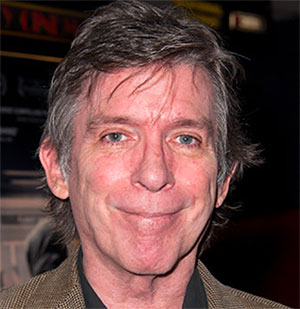10 of the best books of 2024: The surprising reads that stuck
Published in Books News
When I think back on what I read his year, on what stuck, and stuck, refusing to unstick, the common denominator was my surprise at my own surprise. A fresh take! A subject I’d assumed I knew! An antidote to heard-it-all-before-ism, that cynicism we develop from having access to every story ever told, every opinion ever voiced and every song ever sung, behind a black mirror in your pocket. Cults? Bret Anthony Johnston’s “We Burn Daylight” found a love story in the old ugliness of Waco. Dystopia? The heroine of Anne de Marcken’s “It Lasts Forever and Then It’s Over” is dead, yet still longing for a failed world. Chicago’s Jesse Ball, never at a loss for experimenting, returned with “The Repeat Room,” mashing Kafka, fascism and our courts into a revealing sorta-thriller.
And those aren’t even three of my 10 favorite books of 2024.
Surely you have your own? Social media is awash in lists of reads from last month, last week, last year, driven by the same shock of recognition that there’s plenty new under the sun. “Craft: Stories I Wrote for the Devil,” by Chicago’s Ananda Lima, impressively remade the Faustian bargain. James Marcus’ “Glad to the Brink of Fear: A Portrait of Ralph Waldo Emerson”; Alexis Pauline Gumbs’ “Survival is a Promise: The Eternal Life of Audre Lorde”; Keith O’Brien’s “Charlie Hustle: The Rise and Fall of Pete Rose and the Last Glory Days of Baseball” — each a cool breeze in the typically formal category of biography. Ian Frazier’s “Paradise Bronx” found a wandering epic in the history of a neglected borough; Tana French continued to retool detective writing in “The Hunter”; and Katherine Rundell’s “Vanishing Treasures” not only brought a strange, hilarious appreciation to endangered animals, her underrated fantasy “Impossible Creatures” invented a world of new ones. Rebecca Boyle’s glowing history “Our Moon” looked into the sky and reminded us that seeing something every day is not the same as knowing it.
None of those books are in my top 10, either.
That’s how much good stuff there was. What follows then are 10 favorites, the stickiest of stickers, in no order. If you need a stack of fresh takes for 2025, start here:
“Keeping the Faith: God, Democracy and the Trial That Riveted a Nation” by Brenda Wineapple: If you’re eager for answers to the presidential election, start here. If you’re merely looking for gripping history you assumed you knew — ditto. Wineapple, one of our great contemporary American historians, recounts the players, causes and events leading to the Scopes Monkey Trial of 1925. A Tennessee school teacher, accused of teaching evolution, was defended by Chicago’s Clarence Darrow. But as Wineapple shows with impeccable research and accessible storytelling this was never about proving science, but about harnessing intolerance and exploiting the national tension between ignorance and truth. Wineapple doesn’t explicitly lay out the trial’s resonance 100 years later. She doesn’t need to.
“Headshot” by Rita Bullwinkel: Debut novel of the year, a sports drama that doesn’t find headlong momentum in triumph but how a group of teenage girls define themselves through competition and each other. Structured around seven bouts at an amateur tournament in Nevada, Bullwinkle’s novel pulls readers in and out of real-time thoughts, pausing over futures. One boxer will be a wedding planner; another won’t be able to hold a cup of tea, her teen boxing reaching out into old age. In their minds is where the action is most brutal: Some can’t shake tragedies; some find themselves fond of violence. Bullwinkle keeps us in the moment, never parsing their psychology, and certainly not leading us toward cinematic bombast. One fighter, as she wins, notices “warmth radiating through her chest.” But it’s a warmth, Bullwinkle writes, “she’ll feel again very few times in her life.”
“James” by Percival Everett: I didn’t want to include this. If only because, if you’re up on literary fiction, you expect it. This is the book of the year, an instant classic. What’s left to say? Well, it’s one of the few instances when the hype matches the quality. Everett, whose decades of obscurity are now gone, is on all burners here — humor, pacing, language, making room for a reader to rest. His companion to “The Adventures of Huckleberry Finn” is too alive to be a 21st-century corrective. Reading Twain is not necessary, only knowing that Everett’s James was Twain’s simple and loyal Jim. And James is boundless, turning on and off his intellect to appease white people, noting the irony of having to pretend that he doesn’t understand the word “irony,” always playing the long game to escape from slavery: “I never felt more exposed or vulnerable as I did in the light of day with a book open.”
“Cue the Sun! The Invention of Reality TV” by Emily Nussbaum: You’re wondering: Do we need this book? Nussbaum, who won a Pulitzer Prize as TV critic for the New Yorker, asks it herself. Then directs us to a better question: Who knew the development of the most hated TV genre offered so much insight into social experiments, human cruelty, technology and the blur between high and low art? It’s a poke through roots (“The Gong Show,” cinema verite) and a cache of interviews (including Rodney Alcala, the killer subject of Netflix’s “Woman of the Hour”). Nussbaum is such a fun guide you reveal in your own rubbernecking even as you sweat the apocalyptic ramifications of, she writes, “filmmaking that has been cut with commercial contaminants, like a street drug, in order to slash the price and intensify the effect.”
“The History of Sound: Stories” by Ben Shattuck: Ever close a book and just … sigh? There’s nothing overtly gimmicky to the dozen stories in this graceful collection, rooted in New England pubs and logging camps and prep schools, spanning the 1600s to now. Shattuck — whose excellent “Six Walks” retraced the footsteps of Thoreau — is more interested in natural echos of ambivalence, uniting characters across stories without fuss, in sometimes funny ways. One tale, a harrowing account of a lost utopian community in backwoods Maine, is revisited in another tale, but as an academic paper written centuries later that gets the history of that community completely wrong. A (faux) Radiolab transcript about the mysterious photo of an extinct seabird is matched later to a bittersweet response, the story of the struggling husband who snapped the picture. If it sounds like last year’s “North Woods” (also set in New England, spanning centuries), that’s not a bad thing.
“The Unseen Truth: When Race Changed Sight in America” by Sarah Lewis: Lewis, a Harvard University cultural historian with a specialty in how visual arts shape the world, is one of a few innovators worthy of that overused title “disruptor.” She works here in the period from the Civil War to Jim Crow, showing how civic leaders (Woodrow Wilson, P.T. Barnum) willfully disregarded evidence that race was a myth, establishing racial hierarchy. It’s a fascinating history of cultural blindness, centered on the Caucasus region in Europe, from which we derive “caucasian,” and where scholars rooted whiteness. Americans sympathized with the Caucasus people as they went to war against Russia — and then photos circulated showing a population far from just white. It’s a handsome, art-filled book about how choosing to ignore facts creates the illusion of truth.
“Everyone Who is Gone is Here: The United States, Central America and the Making of a Crisis” by Jonathan Blitzer: Clarity. If there’s something Blitzer, a New Yorker staff writer, brings to the intractable debate on immigration, it’s an accessible, unimpeachable clear-eyed account of how the United States came to the assumption that fixing the border crisis was either simple (“Deport!”) or, as he quotes Rahm Emanuel, so broken it’s “the third rail of American politics.” This urgent, sad freight train of reporting doesn’t offer solutions, but rather, a compelling origin tale for why the influx of Central America migrants and the fear of immigration in the United States are pure cause-and-effect, and how the U.S. bears responsibility. We meet families, policymakers, border officials, activists, and get a history lesson full of military actions perpetrated by U.S. corporations, cash and politics.
“The Secret History of Bigfoot: Field Notes on a North American Monster” by John O’Connor: Ignore the title. This isn’t that book. It’s a tale of how folklore gathers steam, why we believe what we want to believe, and what happens when “the unbelievable is the only thing people believe,” facts be damned. O’Connor, a journalist from Kalamazoo, Michigan, cleverly uses the legend of Sasquatch and those who think too much about him to explore the persistence of hope beyond hope. Along the way, it’s also an entertaining travelogue of local legends, true believers and the sort of dense acreage seen from planes that could hold anything — right? O’Connor himself is skeptical of a massive wildman on the loose, but gracefully honors the metaphor and sacred beliefs required for myths, zeroing with wit and curiosity why it’s an essential fact of humanity that we need mystery to go on.
“Lazarus Man” by Richard Price: I think of Price, that great chronicler of city life, author of “Clockers,” screenwriter for “The Wire,” as a community novelist, in the tradition of “Winesburg, Ohio” and “The Bridge of San Luis Rey.” No more so than with this discursive, pointedly meandering novel, his first in a decade. His writing mimics hardboiled noir then settles on the multitudes, the granular detail, staccato dialogue. Loiters are “a languid pride of lions.” A sudden apartment collapse generates a “night-for-day rolling black cloud.” That mysterious implosion of a five-story apartment complex in East Harlem is just a catalyst for a cataloging of the lives transformed in its aftermath: the unlikely media star created by merely surviving, a cop sleeping with her partner, a mortician who wants his card thrust into the hands of whoever watches the rescue. And on. Why the building fell is an afterthought to the ways we doubt ourselves, transcend and move on, imperfectly.
“Orbital” by Samantha Harvey: Speaking of rhapsodic community novels. Here is the story of six astronauts on the international space station, circling Earth at 17,000 miles per hour, on an average day, peering down at a seemingly uninhabited planet. Or as Harvey describes, only alive when day goes to night and lights flick on. This is a novel of distance and perspective, with no real plot. Aliens wander past, but don’t invade. The station turns without incident. No one goes nuts. And yet, in lyrical bursts, our travelers soak in cosmic hugeness: “Sometimes they want to see the theatrics, the opera, the earth’s atmosphere, airglow, and sometimes it’s the smallest things, the lights of fishing boats off the coast of Malaysia.” Harvey is out to reclaim wonder itself from everyday lack of interest — and in a way, reclaim the novel as a place for feeling.
Mission accomplished.
©2024 The Minnesota Star Tribune. Visit at startribune.com. Distributed by Tribune Content Agency, LLC.






















Comments